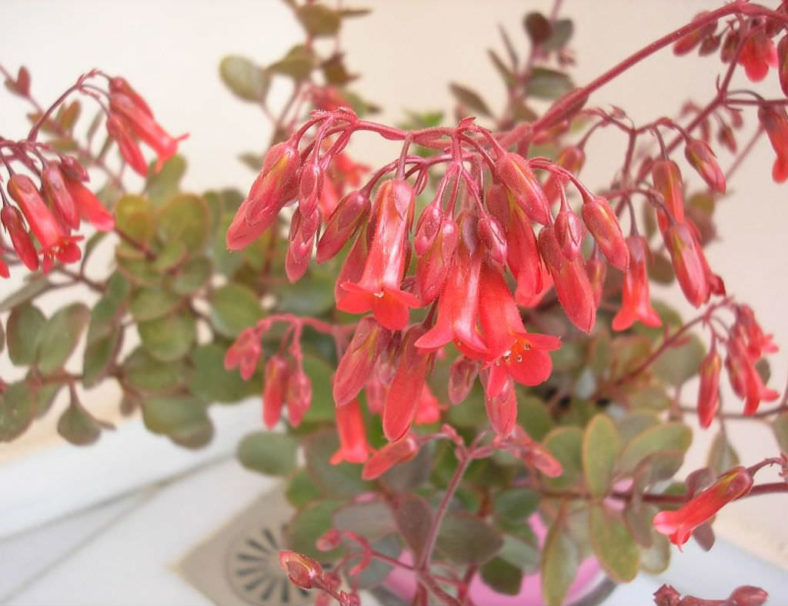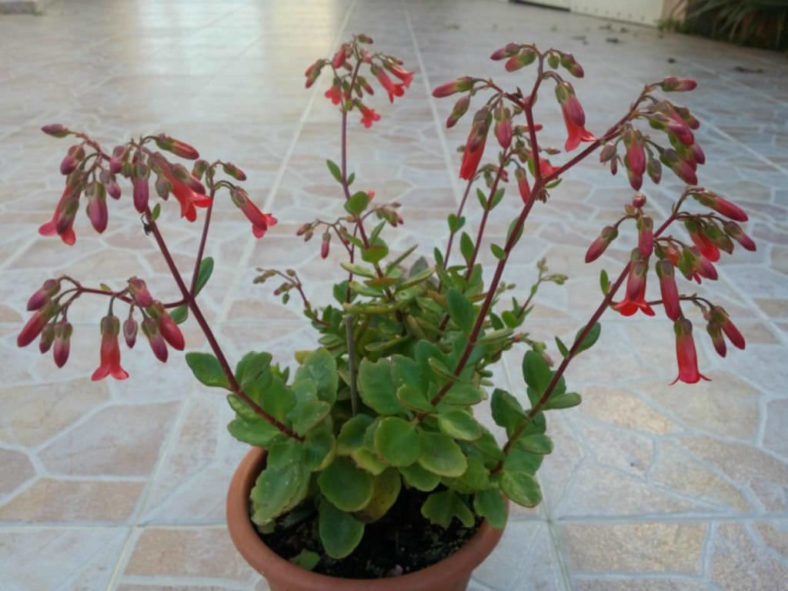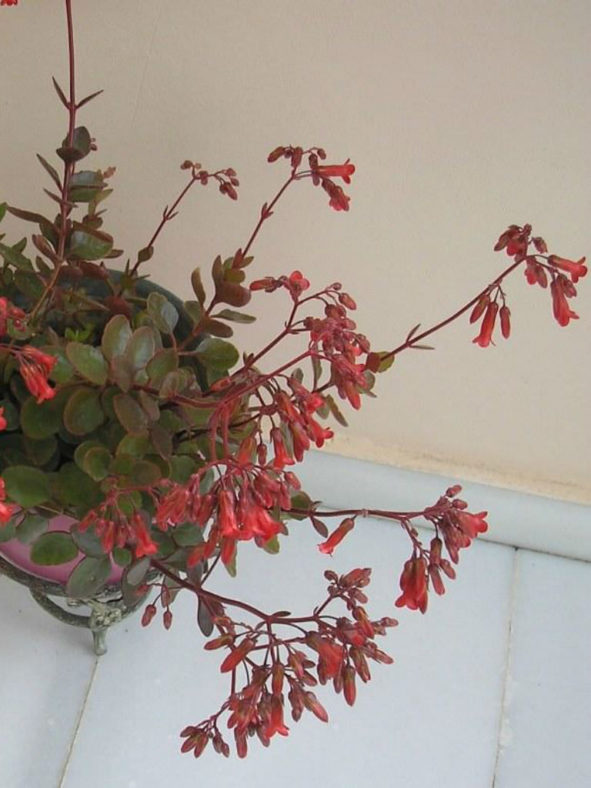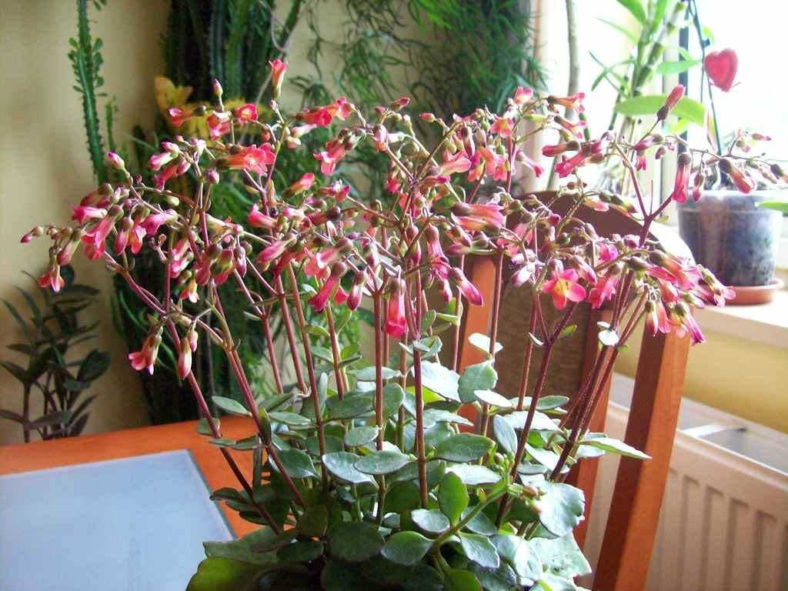Scientific Name
Kalanchoe 'Tessa'
Common Name(s)
Pendent Flowered Kalanchoe
Synonym(s)
Kalanchoe manginii 'Tessa'
Scientific Classification
Family: Crassulaceae
Subfamily: Sedoideae
Tribe: Kalanchoeae
Genus: Kalanchoe
Origin
Kalanchoe 'Tessa' is a hybrid that results from a cross between Kalanchoe gracilipes and Kalanchoe manginii.
Description
Kalanchoe 'Tessa' is a lovely succulent plant with weak, pendent stems bearing green leaves and orange-red flowers. It can grow up to 1 foot (30 cm) tall and 2 feet (60 cm) wide. The leaves are fleshy, oval, and often have red edges.
The flowers are nodding and tubular and can grow up to 0.8 inches (2 cm) long. They appear at the ends of slender, pendent stalks from late winter to spring.

Hardiness
USDA hardiness zones 10a to 11b: from 30 °F (−1.1 °C) to 50 °F (+10 °C).
How to Grow and Care
Kalanchoe care is minimal, but be cautious about light levels. Intense sunlight can burn the tips of the leaves. When growing Kalanchoes, place pots in partial sun to light shade areas.
The flowering varieties are highly rewarding for their colorful and long-lasting flowers. They prefer bright, sunny locations, especially in the growing season. Water moderately from fall to winter when the growth is most active. Reduce watering during the hottest summer months when the plants are mostly dormant and winter when the growth slows significantly. Let the soil surface dry out between waterings. Watch the fleshy leaves for signs of water distress. An ordinary potting soil mix is fine. Feed bi-weekly during the growing season with a liquid fertilizer, or use slow-release pellets.
These small plants require repotting every few years. When repotting, take additional care in handling, as the leaves are somewhat brittle and can snap easily. Clay pots work exceptionally well for planting Kalanchoes. Ensure pots drain well and saucers empty easily.
Learn more at How to Grow and Care for Kalanchoe.
Links
- Back to genus Kalanchoe
- Succupedia: Browse succulents by Scientific Name, Common Name, Genus, Family, USDA Hardiness Zone, Origin, or cacti by Genus
Photo Gallery
Click on a photo to see a larger version.


